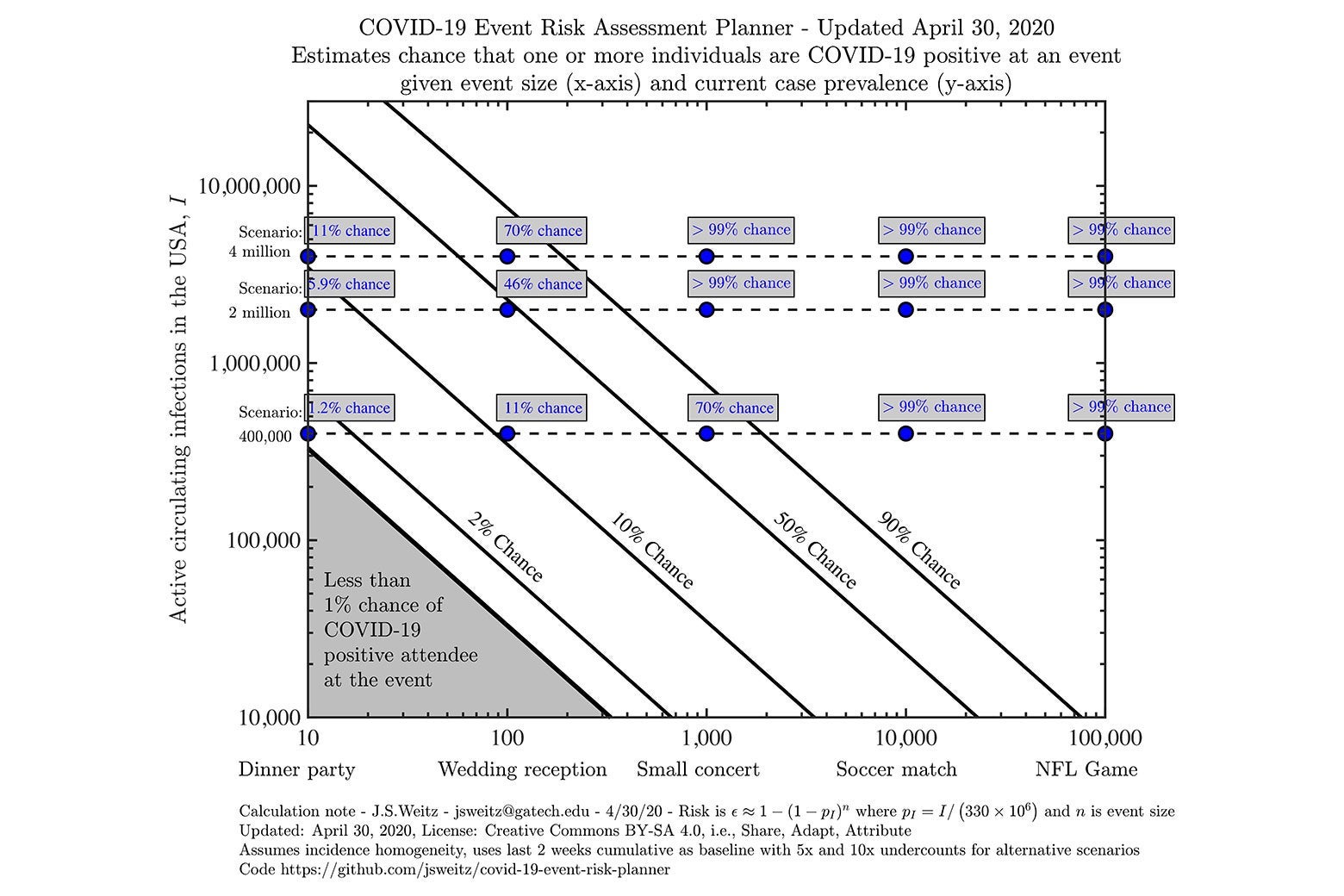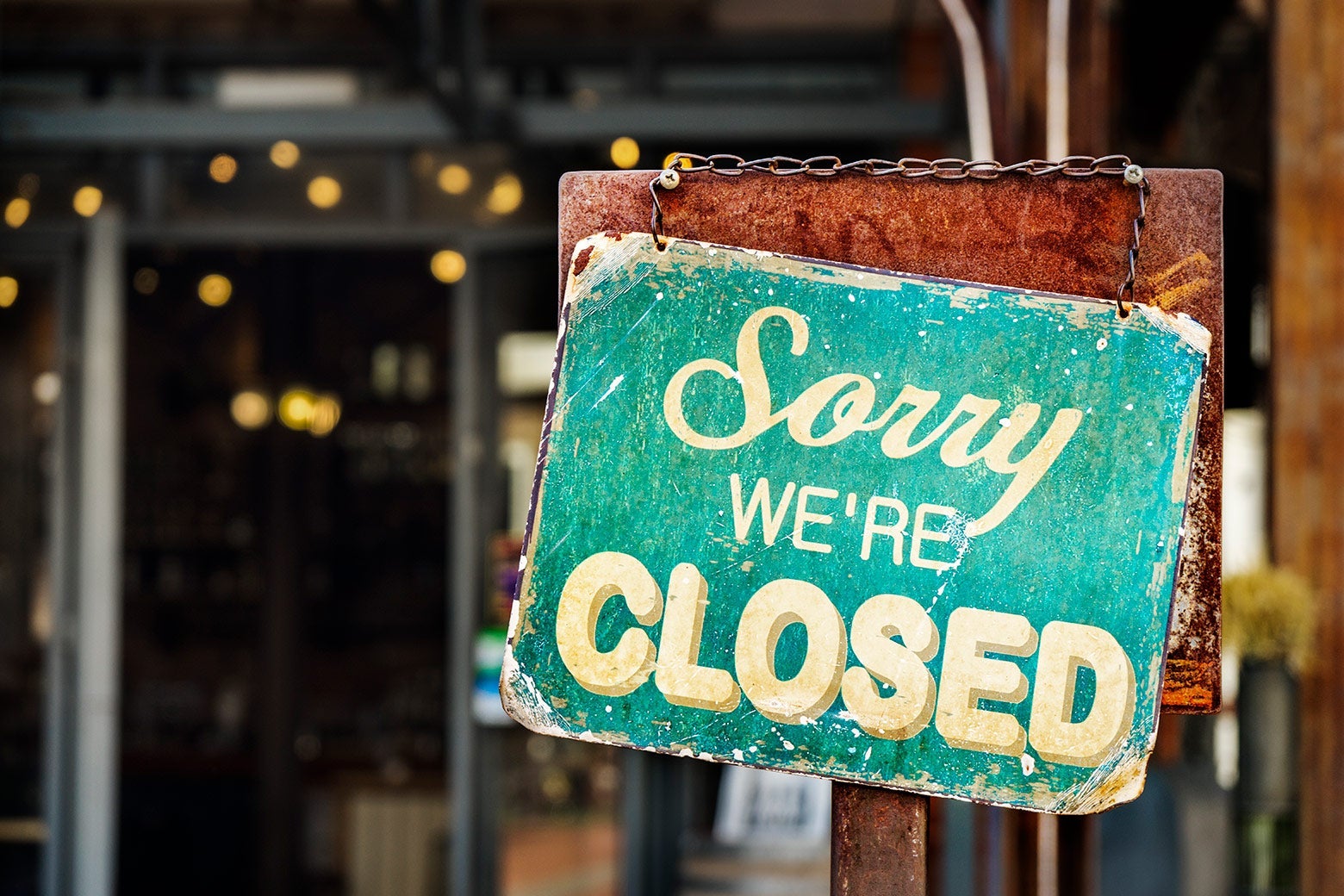SARS-CoV-2 has now infected more than 1 million Americans. Last week, we surpassed 60,000 deaths from COVID-19, the disease that this virus causes in some, but not all, people. And yet, paradoxically it would seem, unless you live in a hot zone, you probably do not know many people who have had it. You may even believe that not a single one of your personal contacts has had the virus.
How can this be? The answer is that we have reached a mathematical moment where such an incongruence between perception and reality is both entirely expected and exceedingly dangerous if poorly understood. Right now, the number of active cases is large enough to pose a substantial and catastrophic threat to public safety and yet small enough that it does not feel that way at all to the average person.
Currently, the virus is known to have infected around 1 in 329 Americans. The number of undocumented cases is thought to exceed that—perhaps by fivefold, tenfold, or more—because of asymptomatic disease and undertesting. Meanwhile, most people know 600 people or so. As of 2019, the average Facebook user in the United States had 338 friends. This might suggest that most people should know someone who has it, but that’s not quite true—we know the virus is concentrated in certain places, as are many people’s social circles. We’re at the level of infection where everyone could know someone, but that doesn’t mean they will.
The number of deaths makes the problem feel even more remote. Approximately 1 out of 5,800 Americans has died of COVID-19. If you know 600 people, that means that on average, someone that you know might themselves know one person who has died. That’s two degrees of separation between you and a single COVID-19 death. The toll of COVID-19 won’t feel real to most Americans outside of hot zones until death counts are at least double of what they are today. It would take more than half a million deaths in the United States before, on average, every American personally knows a single person who died of the disease. We can’t wait that long.
Without an understanding of the math around the risk of exposure, and without the perception that this crisis has truly hit home, it’s perfectly understandable that people are tired of sheltering in place and want to reopen their economies.
But the number of cases that are in our communities is likely to be high enough that going out and about “as normal” presents unacceptable risk of exposure. While the risk of fatality to people young enough to be in the workforce may be quite low, the risk of these individuals introducing it to nursing homes and other at-risk zones becomes high. It may come to pass that the legend of Typhoid Mary will yield to the reality or COVID-19 Communities, unknowingly dispensing death upon death upon the vulnerable, while skating by unscathed.
A graphic representation, below, created by Joshua Weitz, a professor at Georgia Tech studying theoretical ecology and quantitative biology, demonstrates this well. One flaw with this graph is that it assumes that the cases are equally distributed nationally, even though we know some areas have higher risk and others have lower risk, currently. But still, we can quickly see that for the number of known cases in the United States (y-axis), even in modestly sized crowds, the chance that one or more people is SARS-CoV-2 positive is high. The horizontal lines represent a few scenarios of where we are right now—we know there are 400,000 cases circulating in the United States, but it’s likely there are five or 10 times that number (those are the scenarios at 2 million and 4 million cases). You can scan across those lines to see the risk of presence of the virus at gatherings of various sizes.

So, for example, with the current scenario of 400,000 cases, a restaurant or bar with more than 100 patrons would have more than a 11 percent chance of having one positive individual present at a given time. But if there are actually 2 million cases, the chances are 46 percent. And the virus also lives on surfaces for hours and days. So over the course of a day, viral particles of a few individuals on tables, door handles, and restroom sinks will certainly expose more people.
Here’s an instructive way to think about this. In Atlanta, the cars of MARTA, the rapid transit system, have a seating capacity of 64 and a total capacity of 96. Georgia had reported 26,000 cases as of Friday, though many experts assume the number is far higher. But assuming that is right, the chance of being on MARTA car with someone with the virus is 21 percent. Even if somehow only 10,000 people in Georgia have the virus, the chance of being exposed to someone with the virus during one single train ride is still around 9 percent. But if the real number of cases in Georgia is 50,000 or even 100,000, as some believe, the chances are 36 to 60 percent. And that doesn’t even take into account the viral particles left by the commuters who have already left the train. Nor repeated rides day after day.
Whether or not an infected individual is present in a public setting is only part of the story. For those who must be out and about, risk can be reduced, in part, with mask wearing, hand-washing, shift work variation, decreases in maximum capacity in public and private accommodations, and other social distancing factors. But we don’t yet know exactly how effective these strategies are. Until we do, any effort to “open up” the economy, will remain akin to Russian roulette, if the public does not understand the current risk that public gatherings confer.
We have time, but not much. Right now, polls suggest most Americans do not support reopening the economy. But enough do that we are seeing some states relax restrictions. As the number of Americans supporting reopening the economy inevitably rises, we need to be sure that these opinions track the facts on the ground.
The best way to get the public to continue the current restrictions, which, while inconvenient, are saving lives, is not through draconian police enforcement (though that has a role to play) but rather through consistent, credible public health messaging. This messaging is how we have shifted public opinions and practice about seat belts, smoking, and safe sex. We can do it for COVID-19, too, using three simple strategies.
First, Americans must understand that they and their families are still at risk. We are notoriously bad at interpreting statistical data. Numbers must be accompanied by human interest stories of people “just like us” who have been affected. Otherwise Americans (and even some physicians) will believe, incorrectly, that we are immune or remote to the realities of this disease.
Second, we must believe that our friends and neighbors expect us to act safely. Friends don’t let friends drive drunk; and friends don’t let friends go to large gatherings without masks either.
Finally, our messaging must be delivered consistently, and by someone we trust. If we are to adequately communicate risk—and encourage safe behavior—we need influencers from public officials to media personalities on board.
